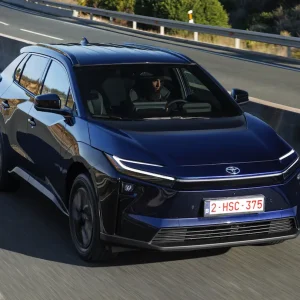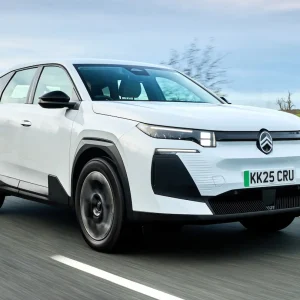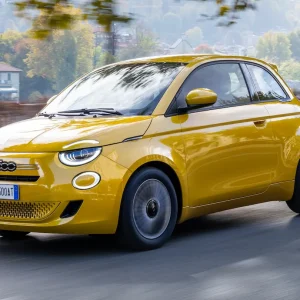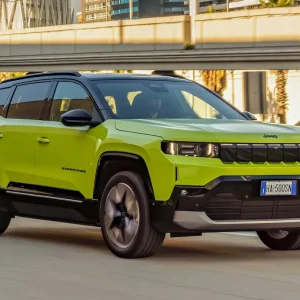The new Mercedes E-class has joined the BMW 5-series, Audi A6 and Jaguar XF in the executive saloon segment.
At present, there is a choice of just two diesel engines: the 194hp E220 – which will be the core corporate model – and the 258hp E350d joining the range in the next couple of months. That will be added to with the E350e plug-in hybrid before the end of 2016, offering emissions of 49g/km, just below the 50g/km tax cut-off point.
Mercedes has fallen foul of the rules introduced last year that mean individual wheel sizes have to have different emissions figures, so this AMG-line model with its attractive 19s is, albiet still decent at 112g/km, 10g/km worse than the lower-spec SE trim that comes with 17-inch wheels. The AMG styling kit adds £2495 to the price of SE too, while the wheels that are part of the kit make a real difference to the looks, this car also jumps up in BIK by two bands.
The E-class really steps up in refinemen
t terms and the 2.0-litre engine mates well with the classy and relaxed driving style of the big Mercedes. It doesn’t handle like a BMW, but it’s not supposed to because if you want that you buy a 5-series, but that doesn’t mean the Merc is a barge, just that it’s at its best carrying people in hushed, refined comfort.
One pretty big negative was the optional lane-keeping assist system, which is way too quick to stick its oar in, to the point where it’s more likely to cause than prevent an accident. Something as simple as not indicating to join the motorway from a sliproad caused it to brake sharply in a move that looks wildly unpredictable from the outside.
There were other examples on single-lane roads where it also kicked in for no reason.
The infotainment system is not as user-friendly as most rivals either, and a P11D price that, in usual Mercedes fashion, is higher than the competition, with the Audi, BMW and Jaguar all undercutting it by at least £1000.
That’s costly for the Merc in whole-life cost terms. The Jag XF has a better RV as well as being cheaper, which gives an excellent car a huge 5.1p per mile advantage, while the BMW’s lower P11D makes up for a slightly worse RV and puts it 0.5p per mile under the E-class. The ageing Audi A6 is behind its rivals, but is next in line for an update.
The new E-class extends the car’s key strengths and is more efficient and better equipped, but it’s still beaten on cost per mile by some high-quality competition.
Mercedes E220d AMG-line saloon |
| Model price range £35,880-£47,225 |
| Residual value 40.1% |
| Depreciation £23,000 |
| Fuel £4588 |
| Service, maintenance and repair £3478 |
| Vehicle Excise Duty £60 |
| National Insurance £3813 |
| Cost per mile 74.2p |
| Fuel consumption 65.7mpg |
| CO2 (BIK band) 112g/km (22%) |
| BIK 20/40% per month £141/£281 |
| Warranty 3yrs/unltd miles |
| Boot space (min/max) 540 litres |
| Engine size/power 1950cc/194h |





